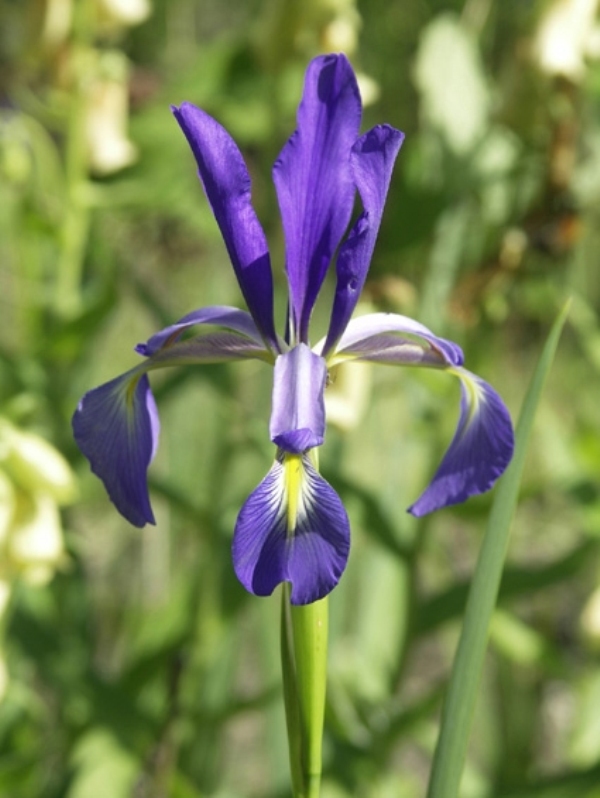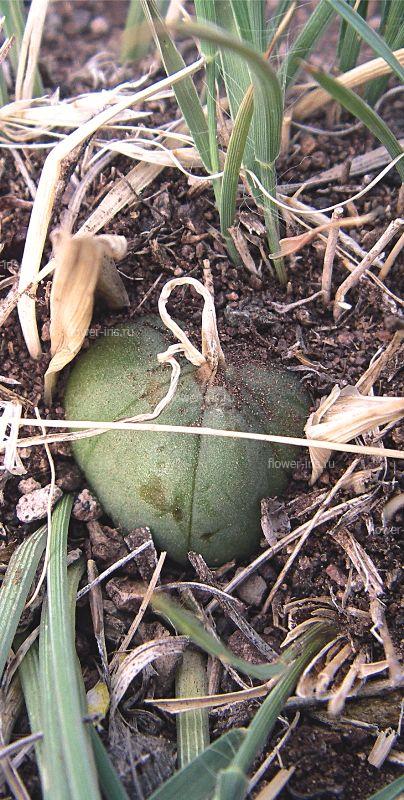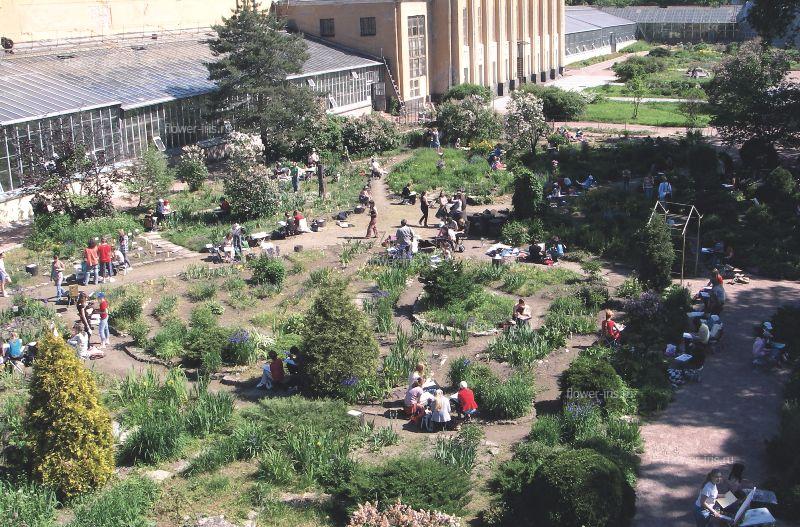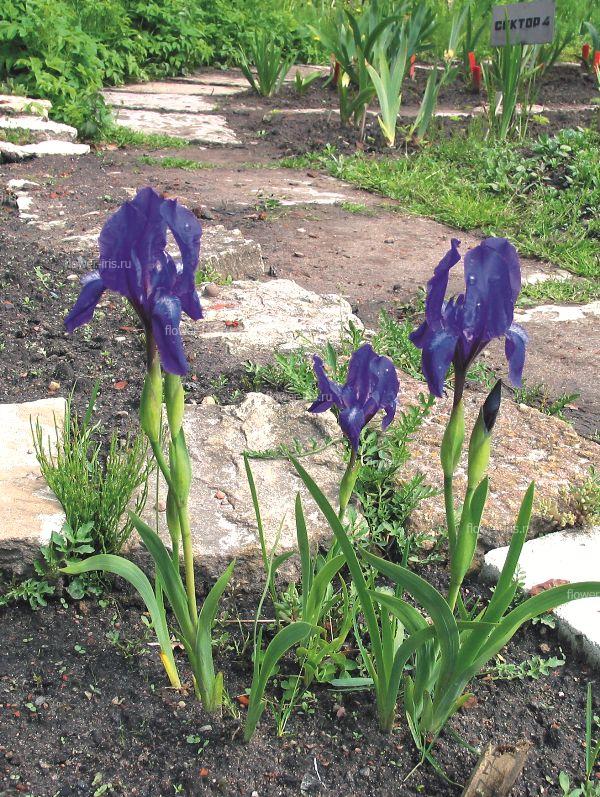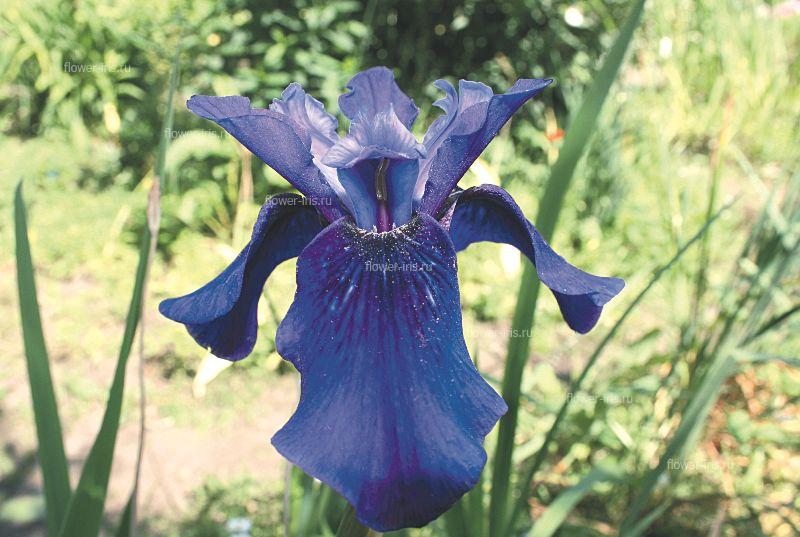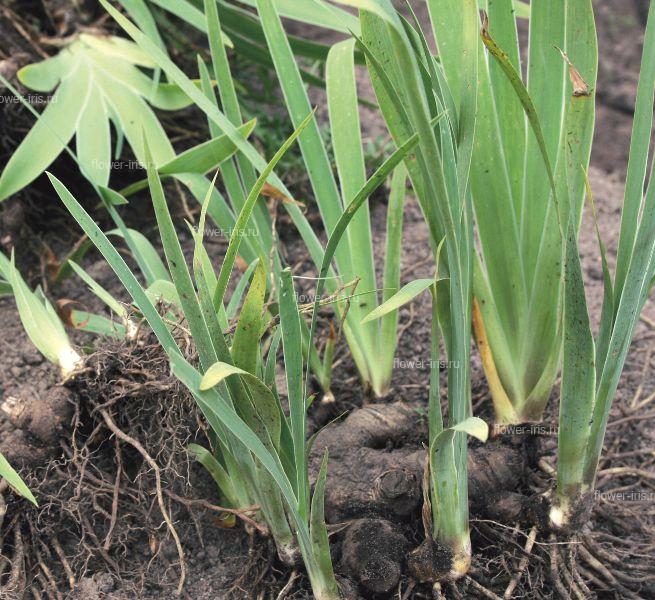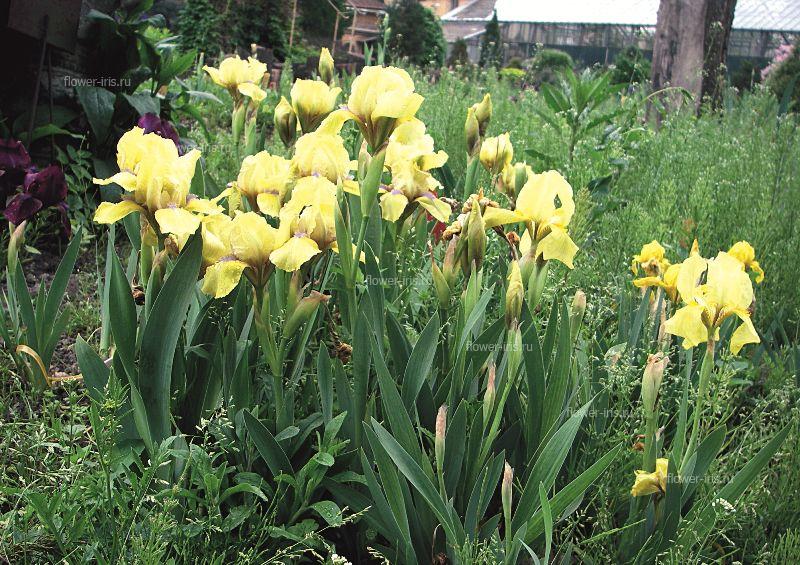|
News Photo Gallery |
Subgenus Xyridion (Xyridion) - Wood-iris rhizomeHomepage → Books on Iridarium (Iris Garden) → Look in the book → Subgenus Xyridion (Xyridion) - Wood-iris rhizome
Introduction
Create iridariya Family Iridaceae Bulbotubers Bulbous Rhizomatous Genus Iris Subgenus Iris Subgenus Limniris Subgenus Eremiris Subgenus Xyridion Subgenus Tenuifolia Genus Pardanthopsis The exhibition "Iris Russia" Exposure Iris garden Cultivate Insect Pests and diseases of Irises Literature The translation is done through the service translate.google.com. Rhizome creeping, twisting, gnarled, annular, buried in soil, initially covered with the remains of leaf sheaths, and then laid bare, forms loose clumps. The stem is 2 - or many-flowered, very simple, almost terete. Nail the lower lobes of perianth dramatically expands into a rounded leaf blade, almost prostrate gorizonatlno. Bracts herbaceous, membranous, slightly rough or smooth. Ensiform leaves are flat. Ovary hex. Capsule coriaceous, with spout, hexagonal, or in each of the three angles of 2-type. Seeds are spherical or egg-shaped, shiny, smooth or wrinkled, testa free and pergamentovidnaya. Subgenus Ksiridion represented by 20 species. In horticulture literature them widely established name Spoor Iris (Spuria Irises), for the type species of the subgenus because Spurrier (I. spuria). In the wild, these iris grows mainly in the steppe and semi-desert regions of Asia and Europe. Many species of the subgenus are highly heat-and salt tolerance. One species of this subgenus, stinking iris (I. foetidissima), has evergreen foliage and coral-red large round seeds found on the Mediterranean coast of Europe and North Africa. In the north, it can be grown only in artificial climate. In the collection of cultivated since Sintenisa (I. sintenisii), because Monnier (I. monnieri) and other species of the subgenus have high decorative qualities. In one place can be more than 6-8 years. Currently, 13 species are grown Iridarii Ksiridion subgenus. I. carthaliniae Fomin - K. Kartalinian. The leaves are almost linear, up to 70 cm long., Equal or exceed the peduncle, the end gradually tapering 10-12 (15) mm wide. Flowers pale blue or almost white, large, 7-9 cm in diameter. Capsule 2-3 times longer than wide. Seeds semicircular in outline, brown, with wrinkled skin. It occurs in wet meadows pripoymennyh the middle and upper reaches of the river. Chickens and its tributaries. First collected in Georgia near the town of Mtskheta. Blooms in June. Fruits in late August and early September. I. colchica Kem.-Nat. - K. Colchis. The leaves are thin, narrow-linear, up to 60 cm long., 3 (10) mm wide. Usually lodge, with clearly visible longitudinal veins, more than double the peduncle. Flowers are large, 6-7 cm in diameter., Violet-reddish. Box on a long stem, oblong-ovate, hex, winged, with a short beak or not. Seeds globose, yellowish, with spirally curled wrinkled bumagovidnoy shell. Caucasian endemic. Among the trees and shrubs on stony-gravelly soils, on dry southern slopes of the mountains in the middle belt, absently. Blooms in July. Fruits in August-September. I. graminea L. - K. zlakovidny. Uzkomechevidnye leaves or narrow-linear, strong, with a few conspicuous longitudinal veins, 40-60 cm long., 5-15 mm wide. Above peduncle. Flowers are large, 7-8 cm in diameter., Internal perianth lobes purple, outside - by the end of the plate purple. Box immediately narrowed at the apex, hex. Pear seeds, sometimes slightly compressed, with bumagovidno-wrinkled shell. In the steppes of scrublands, rocky-gravelly soils, on dry southern slopes in the lower and middle zones of the mountains of Southern Europe, Asia Minor and the Caucasus. Blooms in June. Fruits in August-September. I. halophila Pall. - K. solelyubivy. Leaves 50-70 (90) cm., 10-15 mm wide., Long-pointed, peduncle equal or exceed it. The flowers are pale yellow or mostly yellow. Box with a spout, six-sided, faces are pairwise encounters. Seeds brown, flattened, sometimes awkward. Eurasian, the widespread view in this country and outside of Russia. In Russia - in Caucasia and Dagestan, in the European part - the Volga-Don region, Volga, in the south of Western Siberia. Outside of Russia - Central Europe, Kazakhstan, China and Mongolia. Grows mainly in river valleys, in the depressions in the saline coastal and steppe meadows, chievnikah Solonetzic on the banks of rivers, lakes and ditches of steppe shrubs, from desert to sub-alpine zone. Blooms in July. Fruiting in August. I. klattii Kem.-Nat. - C. Klatt. The leaves are almost linear, equal peduncle - 70-90 cm long., 10-15 mm wide. The flowers are dark purple or blue, with dark veins. Box with a spout, six-sided, faces are pairwise encounters. Seeds flat-compressed, semicircular in outline, dirty-white. Caucasian species represented in Russia A limited small northern fragment habitat. Distributed in Dagestan (Ismailovsky district with. Gasim) and Azerbaijan (Shemakha, Aksu, Agdash Yevlakh, Barada, Lankaran, Ganja). It prefers open, well-lit, variable in moist places and marshy meadows. Blooms in July. Fruiting in September. I. ludwigii Maxim. - Ludwig. Peduncle short, lost in the leaves, 10-15 cm long. Flowers are usually among the two, about 5-6 cm in diameter., Blue-purple, with a beard of brown-yellow clavate unicellular hairs on the main vein on the outer perianth lobes. Bracts among the three, parchment, folded lengthwise, with the keel on the crease. Capsule oval, with a spout. Seeds are round, winding-grooved, brown. In Russia, found in the Altai region in the vicinity of the village. Ekaterinovskiy. Outside Russia, the spread in north-eastern Kazakhstan. It grows in steppe meadows, thickets in areas being and rocky steppes. Forms small clumps, distributed sporadically. Blooms in late May and early June. Fruits in June-July. In the culture of seeds is not tied. I. musulmanica Fomin - K. Muslim. Leaves are linear up to 50 cm long., Up to 13 mm wide. The flowers vary in color from whitish-yellow to blue. Capsule oblong-cylindrical, with a long spout, shestirebernaya. Seeds flat-compressed, semicircular in outline, dirty-white. It grows in damp meadows and bolotisnyh Southern Caucasus and northern Iran. Blooms in June. Fruits in late August and early September. I. notha Bieb. - K. unreal. Leaves broadly linear, 8-16 mm wide., 65-80 (95) cm., Gradually tapering to an end, tight, firm, equal to peduncle. The flowers are intense blue (cobalt blue). Box with a spout, six-sided, faces are pairwise encounters. Seeds flat-compressed, semicircular in outline, dark smoky, with a bronze tint. Endemic to the Caucasus. It grows in steppe meadows, on the southern slopes of dry scrub and woodland. Blooms in June and July. Fruiting in August and early September. I. orientalis Mill. - K. eastern. The leaves are 50-70 cm long., 10-20 mm wide., Equal to or lower than the peduncle. The flowers are large, 9-11 (13) cm in diameter., Pale ocher-yellow, with a bright yellow spot on the limb of the outer perianth share. Distributed mainly in the center of Turkey, as listed in the East Aegean Islands and the north-eastern Greece. Like many species of this subgenus, grows mainly on saline soils in coastal meadows and river valleys, wetlands, in depressions, the lakes and ditches, including steppe bushes, from the desert to the subalpine zone at an altitude of 150-1030 m Blossoms in July. Fruiting in early September. I. pontica Zapa?. - K. Pontiac. Narrow linear leaves, up to 20 cm long. and 4-5 mm wide. The stem is barely raised above the surface of the soil, 2-3 (7-9) cm. Flower rather large, 5-7 cm in diameter, purple-reddish or violet-blue, with a pleasant aroma. Capsule short, broad. Seeds globose or angular, reddish brown. Grows in open grassy slopes, in the steppes. Absently. Presented numerous populations occurring in Russia at the border area. In Russia - part of the European and North Caucasus. Outside Russia, the spread in Moldova, the Black Sea, South-East Europe. Blooms in June. Fruit in July and August. I. pseudonotha Galushko - K. lozhnonenastoyaschy. Leaves linear, ensiform, the apex gradually acuminate, 25-50 cm long., (5) 8-13 mm wide., Usually shorter than the stem, gray-green, smooth, lower stalk. Flowers dirty pale violet-blue or pale dirty blue with darker veins. Capsule oblong-cylindrical, with a long nose and a pair of 6 contiguous sharply distinguished, almost winged edges. Seeds flat-compressed, semicircular in outline, light brown. North Caucasian endemic. Eastern Caucasus, the Caspian Dagestan. It grows in saline and damp places. Blooms in July. Fruits in late August and early September. I. sogdiana Bunge - K. Sogdian. Leaves 50-70 (90) cm., Long-pointed, equal or exceed its peduncle, 15-18 (20) mm wide. The flowers are blue-purple-bronze. Box with a spout, six-sided, faces are pairwise encounters. Seeds brown, flattened, sometimes awkward. In the valleys, moist meadows, along streams in the lower zone of the mountains of Central Asia (Turkmenistan Towers and Pamir-Alai and Tien Shan). Flowering in late June-early July. Fruits in late August and early September. I. spuria L. - K. Spoor. The leaves are 50-80 cm long. Equal to the height peduncle, 8-12 mm wide. The flowers are 6-8 cm in diameter., Lilac with purple veins and yellow warning bar at the center of shares outside the perianth. A box with a spout, 6-sided. The seeds are light brown. Grows in Central Europe, is distributed mainly in saline soils in the south of Austria, Hungary, Germany, Denmark, Slovakia, Sweden. He is also listed in the south of England. Blooms in July. Fruiting in September. |


 Eng
Eng

